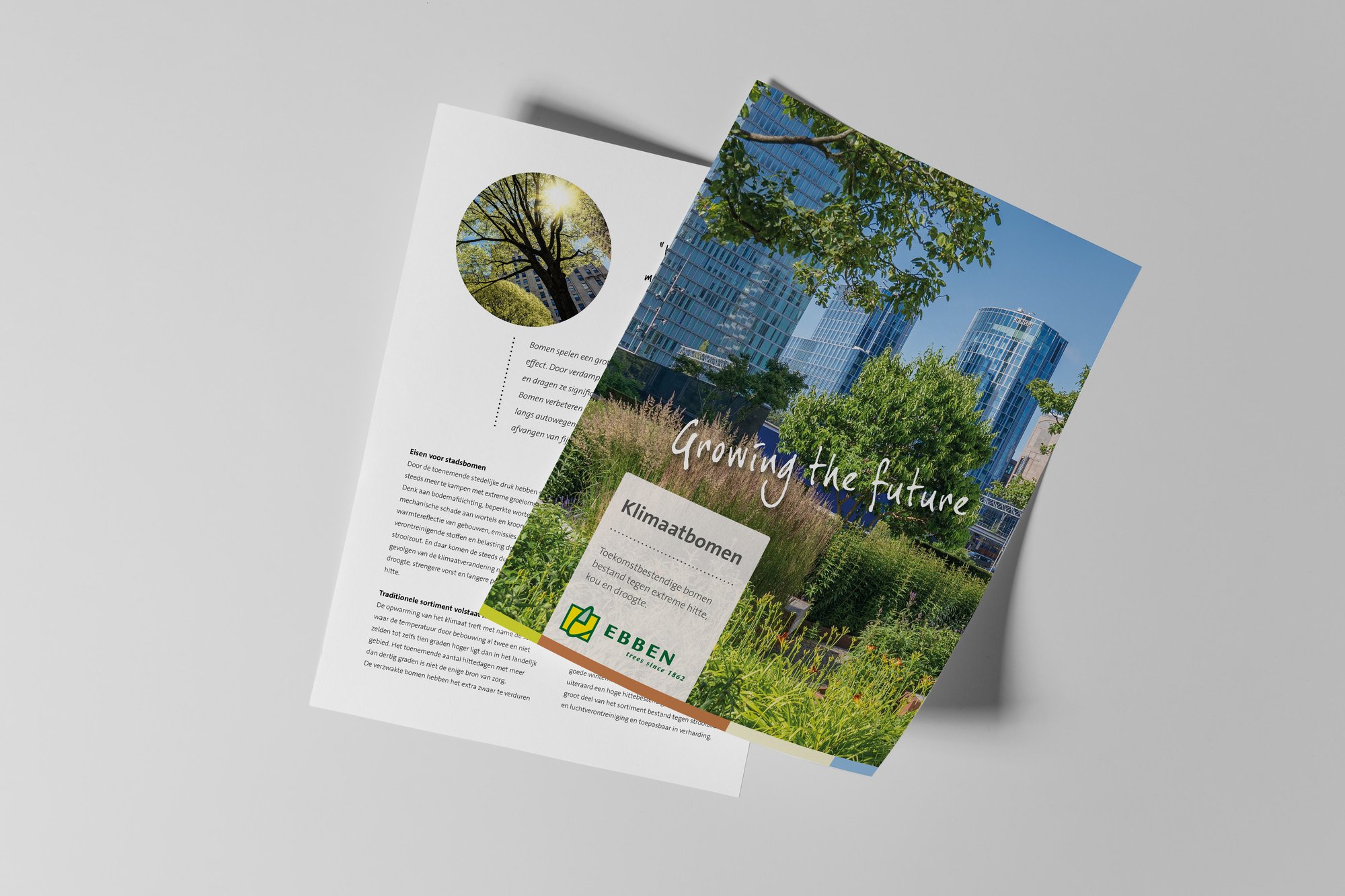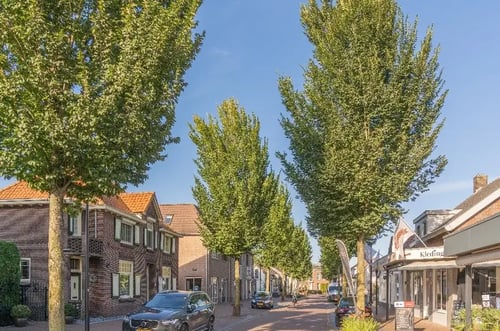Trees also need sunscreen

High temperatures, drought and intense exposure to the sun's rays. Because of changes in climate and extremely hot summers with temperatures exceeding 35°C, trees increasingly suffer from trunk scorch. Given the increasingly more extreme summers and resulting visible effects, we advise taking action to prevent bark scorch after planting to protect your precious trees – and investment. Read how best to do this in this article.
Here, after tree felling, the trunks of (older) beeches in the vicinity would previously be wrapped in jute. This was done to prevent the bark of the beeches, once shaded by these trees, from scorching. After all, this might lead to the death of the beech. In Central Europe, there has been a long tradition of painting or wrapping trees against bark scorch. Other than beech, bark scorch of trees with a smooth bark is a fairly new phenomenon in North-West Europe. How does this occur and what can be done against it?
Bark scorch
In the past few years, we have increasingly been faced with hotter and drier periods in the spring and summer. This combined with drought stress and a strong burning sun on trunks with a thin bark lead to the death of the inner bark. Trees are most prone to bark scorch between 3pm and 5pm when the sun is in the west to south-west later in the afternoon at compass bearing 235-245 degrees. The temperature on the bark can reach as high as 45 degrees Celsius. The rising sap is no longer able to cool the bark sufficiently or temperature variations in the bark cause the wood to distort.
Often this bark scorch cannot yet be observed in the first year. As soon as the secondary growth of the tree takes place (mid-September) or when the sap rises in the following year, you can slowly detect a greying/discolouration on the trunk on the south-west side of the tree. After a few weeks the bark will tear open from the base, extending up by 1.5 to 2 metres. In a few cases, bark scorch can also occur higher in the crown but always in areas where the foliage of the tree provides no shade or cooling effect due to evaporation. In places where the bark bursts open, weak spots arise where the tree is always susceptible to penetrating moulds.
Certainly, newly planted trees or trees suddenly exposed to sun may suffer because the limited amount of roots means that the tree is unable to absorb enough water.
Protecting trees
Trees with a thin layer of bark are at greatest risk of damage due to bark scorch. This traditionally includes Acer, Alnus, Carpinus, Fagus and Tilia but we are increasingly seeing damage more often in, amongst others, Aesculus, Fraxinus, Juglans, Magnolia, Liriodendron, Paulownia and Quercus ilex. After planting, these trees must be given proper protection. How?
- Avoid drought stress by procuring trees that have been regularly transplanted.
- Provide a well-prepared growing site without compacted layers, whereby the present stable humus percentage is at least 1% and maintained at this level, but ideally improved.
- In the first three years, water planted and transplanted trees in the correct dosages. This may, for example, be via a separate automatic sprinkling system which is used for watering the trees and single specimens each individually via drop irrigation.
- Protect the south-west side of the trunks by applying trunk reflection. This can be done using:
1. Reed mats, coir mats or bamboo mats. These are robust but natural resources widely used in the nursery trade in particular in order to protect the bark against sunburn. A benefit of these resources is that they are very quick to put in position. This is less practical in public spaces due to the greater chance of vandalism. Also, a tree protected by a reed mat is less sun-resistant and so the crown will have to be well-developed before the reed mat can be removed. The mesh of the mats must, therefore, be at least 0.2-0.5 cm.
2. Trunk coating . This is an old method that was already used a lot in the past in Central Europe but also in Western Europe in order to protect fruit trees for example against frost cracks. Possible natural resources are whitewash on a lutum base, ARBO-FLEX© or kaolin clay (Surround). This protects the trunk and because the coating disappears slowly, the trunk still builds up protection against the sun. The downside is the aesthetic value: not everyone appreciates the whitewashed trunks of trees in public spaces.
3. Jute. Wrapping the trunks with jute is the traditional method of protecting them and can be very effective. However, this is set against the fact that the jute breaks down quickly. Sometimes it is wrapped so tightly around the trunks that it has a detrimental effect on the tree. Jute protects the trunk against the sun's rays but by wrapping there is little cooling effect, or none at all. This can have adverse effects, actually causing scorching more readily.
Climate-proof designs
In a climate-proof design of the outdoor space the prevention of sunburn damage to trees is one aspect to take into consideration. This can be by using the right tree in the right place. And by avoiding very tall crown heights (+ 220 cm) in juvenile to semi-juvenile avenue trees with a relatively thin bark. To avoid problems, it may be advisable not to plant trees sensitive to damage on the south or south-west, to ensure they are feathered or planted in the shade of other plantings or buildings.














